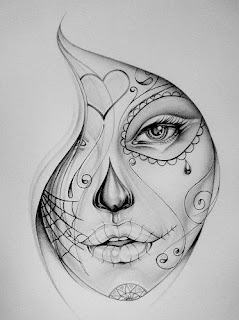Thursday, January 5, 2017
Fashion Sketches
In the fashion world, new designs are presented in the form of hand-drawn sketches before they’re actually cut and sewn. First you draw a croquis, the model-shaped figure that serves as the base of the sketch. The point is not to draw a realistic-looking figure, but a blank canvas of sorts on which to display illustrations of dresses, skirts, blouses, accessories and the rest of your creations. Adding color and details like ruffles, seams and buttons helps to bring your ideas to life.
1
Gather materials. Choose a hard lead pencil (H pencils are best) that makes light, sketchy marks that are easy to erase. Marks made with these pencils also don't indent the paper, which is helpful when you want to add color to the image. A good quality eraser and thick paper are also important materials to have if you want your sketch to look professional.
- If you don’t have the right type of pencil, you can do a sketch with a number 2. Just remember to make very light marks, rather than pressing hard on the page.
- Drawing in pen is not advisable, since you won’t be able to erase marks you make.
- You will also need colored markers, inks or paints to illustrate your clothing designs.
2
Decide on a pose for your croquis. The model for your design, called a croquis, should be drawn in a pose that will show off the items best. You can show the model walking, sitting, bending, or in any other position. As a beginner, you may want to start with the most common pose, which is a runway sketch that shows a model standing or striding on a runway. This is easiest to draw and it will allow you to illustrate all of your designs in full view.
- Since you want to illustrate your designs in a way that makes them look professional and appealing, it's important to model them on croquis that are well-proportioned and well-drawn.
- Many fashion illustrators practice drawing hundreds of croquis to perfect their ability to create a variety of poses.
3
Consider alternate methods for creating a croquis. It's nice to be able to draw your own croquis, since it allows you to create a model to the exact proportions you want. However, if you want to jump straight to drawing your clothing designs, there are a few shortcuts you can opt to take:
- Download one online, where you'll find them in a range of shapes and sizes. For instance, you can download a croquis in the shape of a child, a man, a petite woman, and so on.
- Make a croquis by tracing the outline of a model from a magazine ad or another picture. Just place a piece of tracing paper over the model you like and lightly created an outline.
Wednesday, January 4, 2017
Pencil Sketch.
*When painting with water, move from lighter areas to darker areas. The brush will carry the darker colors into the light areas if you do not do this.
*Your pencil marks and brush strokes should go with the contours of your subject.
*If you plan to add a background, you should do that first.
*If you notice an area is too dark before adding water, use a kneaded eraser to lighten it. Squeeze the eraser and press it flat against the area to be lightened. Peel it off, stretch and roll it, repeat till it's lightened. This is gentle enough that it won't damage the paper surface the way rubbing with other types of erasers will.
*Don't add pencil to wet areas; it creates a darker colour that won't change.
*You may be able to remove small errors by adding more water and blotting it with the paper towel. This is particularly good for lightening small areas if you've lost a highlight. Once it's dried, it may still work depending on the brand of watercolor pencil. Derwent Inktense and Faber-Castell Albrecht Durer watercolor pencils do not re-wet and can't be lightened once dry, but Prismacolor Watercolor Pencils, Derwent Graphitint, any graphite Sketch and Wash, Derwent Watercolour and many other brands do "reactivate" if you dampen them again. Paint the highlight with clean water and gently blot to lift color. Repeat as needed unless it starts to damage the paper surface.
*Test unexpected color combinations on a side sheet of watercolor paper or a multi media sketchbook. Try mixing complementary colors like orange and blue or yellow and violet. See whether mixing two dark colors like Indigo and Dark Brown may make a richer black than the black pencil. Sometimes layering the very bright colors in the right order and the right combination can give richer browns and grays than using the brown and gray pencils.
*Try a waterbrush - a nylon watercolor brush with a plastic handle that has a water receptacle in it providing a steady flow of water to the tip. These are available from Niji, Derwent, Sakura and several other manufacturers. Immensely convenient for watercolor pencils, you clean them just by swiping them on a cloth till it runs clear again before changing to a different color area.
*Shade lightly and evenly, deep marks may remain or groove the paper in places where you don't want them.
*Sometimes it can even be useful, if you are going to blend many large patches of colour for a background, to paint the whole sheet lightly with water. Before it dries, add the pencil layers on top and then yet another watery layer for a wishy- washy effect.
Phare du Petit Minou
Andreas is an accomplished artist and illustrator. Most of his drawings feature race cars, because professionally, he works for automobile tuning companies around the world. However, his portfolio also includes simple, beautiful drawings, like this one, of architectural elements, landscapes and cityscapes.
Tuesday, January 3, 2017
Monday, January 2, 2017
Subscribe to:
Comments (Atom)











